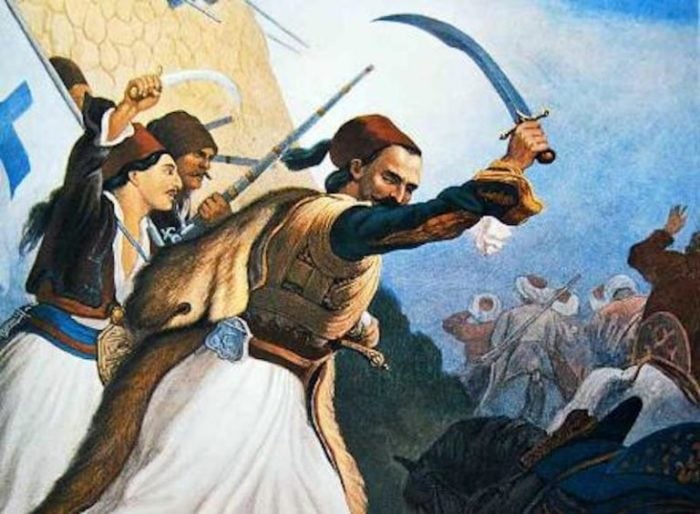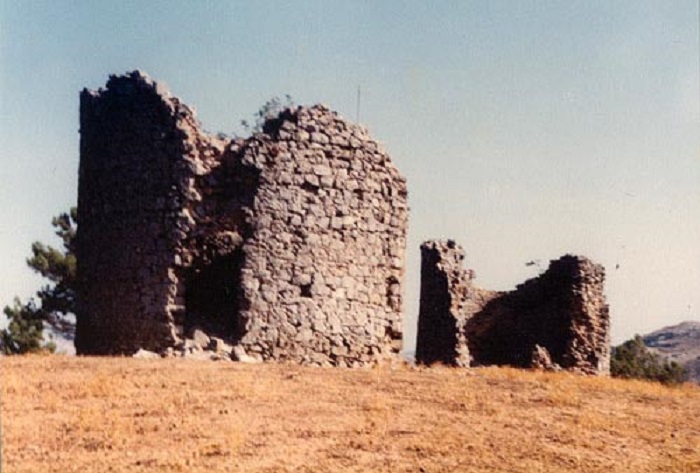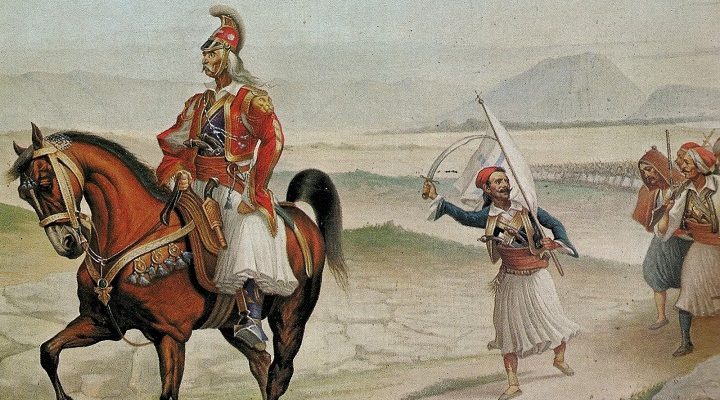
The Battle of Valtetsi, which took place on this day 202 years ago, was the first major victory of the 1821 Greek Revolution and determined the course of the War of Independence.
The battle, which took place around the mountain village of Valtetsi in Mantineia roughly 12 km (7.5 miles) west of Tripolitsa (today’s Tripolis), began on May 12, 1821, according to the Julian calendar, and on May 24 according to the Gregorian calendar, and lasted for two days.
The Battle of Valtetsi paved the way for the taking of Tripolitsa, the heavily fortified Ottoman capital of the Morias region (today’s Peloponnese), on September 23rd. It was a crucial blow to the rulers.
The victory at Valtetsi also exemplified the bravery and incredible leadership skills of General Theodoros Kolokotronis, who became the iconic figure of the 1821 Greek Revolution.
Leading to the Battle of Valtetsi
After the battle at Levidi and the defeat of the Turks on April 14th, the Greeks set up camps in Valtetsi, Chrysovitsi and Piana as part of a Kolokotronis initiative aimed at coordinating military operations for the conquest of Tripolitsa.
It was a strategic plan that Kolokotronis managed with difficulty, as other chieftains continually objected to his plan.
Every day, Kolokotronis went to and fro in the three camps, solving problems that arose and encouraging the young fighters. “I slept in Valtetsi, had lunch in Piana and dined in Chrysovitsi,” he wrote in his Memoirs.
The strategic importance of Valtetsi and the strengthening of this camp posed a clear threat to the Ottomans. On April 25th, powerful enemy forces coming from Nafplion attacked the camp.
The Turks’ surprise attack forced the camp defenders under Kyriakoulis Mavromichalis to withdraw. The Ottomans then set the village on fire.
Kolokotronis, who had assumed that the Turks would head for another Greek camp, rushed to Valtetsi and reorganized the camp once again.
The Greeks built bastions on the hills around the village and fortified the church and the few houses of the village that had remained intact after the fire.
The eastern bastion, in Chomatovouni, was manned by the fighters of Kyriakoulis and Elias Mavromichalis, the hard-nosed Maniots.
The western bastion was manned by old Mitropetrovas (Dimitrios Petrovas), Dimitrios Papatsonis, Ioannis Mavromichalis, and Panagiotis Kefalas among others.
Other chieftains and troops manned the church and the remaining houses. Kyriakoulis Mavromichalis was appointed commander of the Greek camp.
At the same time, a watchtower was set up in Epano Chrepa to warn the Greek forces using smoke signals as to where the enemy troops would be coming from.

CC BY-SA 3.0
The Ottomans approach Valtetsi
On May 6, Khurshid Pasha’s Kehayabey Mustafa arrived in Tripolitsa, coming from Epirus, where his leader, the commander of the Morias, was himself fighting Ali Pasha, a rebel leader no longer under the Sultan’s command.
While there, he was informed of the reconstitution of the Greek camp at Valtetsi and decided to act. His goal was first to dismantle the camp at Valtetsi and then to suppress the revolution in Messinia and subdue Mani.
Immediately afterward, he would return to Tripolitsa victorious, bringing trophies and war booty, expecting to receive honors from the Sultan.
Mustafabey had formed a well-equipped military corps of 12,000 men, led by experienced combat officers.
The Greek forces in Valtetsi did not exceed 2,300 men. They had insufficient weapons and questionable combat capability. The danger to the revolution, which was only two months old, was obvious.
Mustafabey delayed the attack by a few days because he believed that the defenders of Valtetsi would see the might of his forces and surrender without the Ottomans having to fire a single shot.
Finally, shortly before dawn on May 12th, the first, main corps of the Turkish army consisting of 3,000 men and led by Turkish-Albanian general Roubi, headed north of Valtetsi in order to prevent the Greeks from sending aid from the Piana and Chrysovitsi camps.
A second corps of 2,000 cavalry and infantry followed while a third rushed to capture Frangovryso to cut off Valtetsi from the Vervaina camp. A fourth was to help the first from Kalogerovouni, and a fifth corps of 3,000 men was to aid with cannons and ammunition.
Kolokotronis was in Chrysovitsi when he saw the smoke signals from Epano Chrepa, warning of the Turkish army heading towards Valtetsi.
The Greek general rushed toward Valtetsi with 800 fighters, having notified Dimitrios Plapoutas who was in Piana.

Battle of Valtetsi—a seminal battle of the 1821 Greek Revolution
The battle was already in progress when Kolokotronis arrived in Valtetsi. Roubi and his men were trying to encircle and crush the fortifications on the east and northeast bastions.
Kolokotronis, however, managed to occupy a hill and began shooting at the Turks. At noon of the same day, Plapoutas and his men arrived and joined the Greeks, who now attacked the enemy.
The situation soon changed, and Roubi’s men were suddenly in danger of being trapped and slaughtered by the Greeks.
Seeing that Roubi’s men were in a dire situation, Mustafabey sent forces from Kalogerovouni to strike the Maniots’ fortifications—but unsuccessfully.
The artillery shelling of the Greek positions was likewise unsuccessful since the bombs either did not find a target or hit Roubi’s men.
It was already dark, and the battle was still raging. Kolokotronis attempted to encourage the fighters, telling them that reinforcements of 10,000 men under Petrobey Mavromichalis were due to arrive.
The fighting went on late into the night, with the two opponents retaining their positions. In the morning hours of May 13th, Kolokotronis broke through the Turkish siege and supplied the bastions with food and ammunition.
During the night, reinforcements had arrived from Vervaina, but their number did not exceed 400 men. They were led by Petros Varvitsiotis, Dimitrios Poulikakos, Antonis Mavromichalis, Anagnostis Kondakis, and Panagiotis Giatrakos.
In the morning of May 13th, the battle resumed with all the intensity of the previous day. Attempts by the Turks to seize the bastions failed one after the other.
One of the leading figures of the 1821 Greek Revolution, Anagnostaras (Anagnostis Papageorgiou), excelled in both this and subsequent battles.
Mustafabey, seeing that Roubi’s men were still in a difficult position and hearing that Greek reinforcements, led by Yiannis Kolokotronis, were being sent, ordered the withdrawal of all his forces.
By the end of the fighting, Greek losses amounted to only four dead and seventeen wounded men. A large number of armaments and military equipment fell into the hands of the Greeks, as well— enough to arm 4,000 men.
The Battle of Valtetsi was the first major confrontation between the Greek revolutionaries and the Turks, and it was one of the great moments of the 1821 Greek Revolution.
The aftermath
The Battle of Valtetsi lasted almost 23 hours and was the first major victory of the Greek War of Independence against the Ottoman Empire.
Immediately after the battle, Kolokotronis gave a stirring speech to the victors; as he mentions in his Memoirs, he told them that the day should be consecrated with fasting and should be celebrated ever after as a commemoration of the freedom of the homeland.
The Battle of Valtetsi victory greatly strengthened the morale and self-confidence of the Greeks and played a decisive role in the fall of Tripolitsa on September 23, 1821, another pivotal victory in the 1821 Greek Revolution.
See all the latest news from Greece and the world at Greekreporter.com. Contact our newsroom to report an update or send your story, photos and videos. Follow GR on Google News and subscribe here to our daily email!



